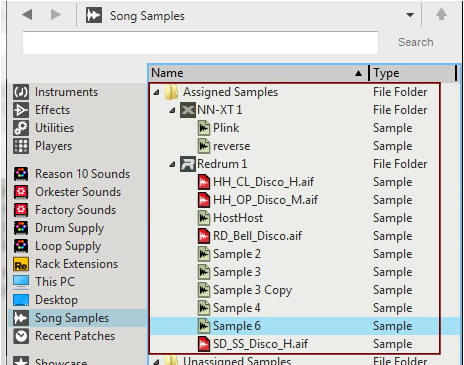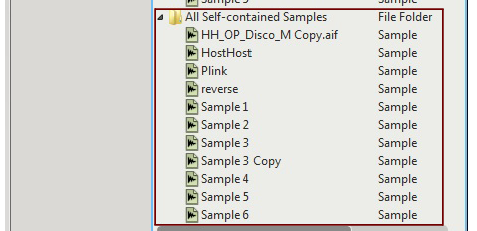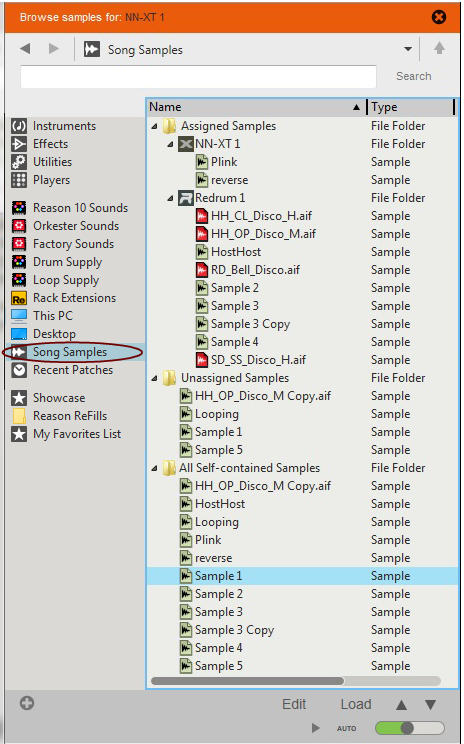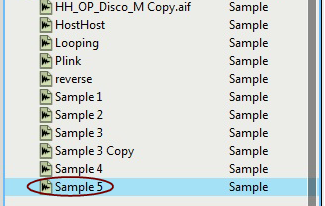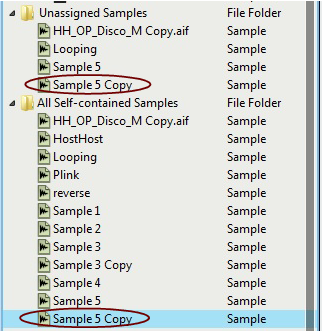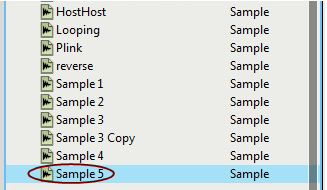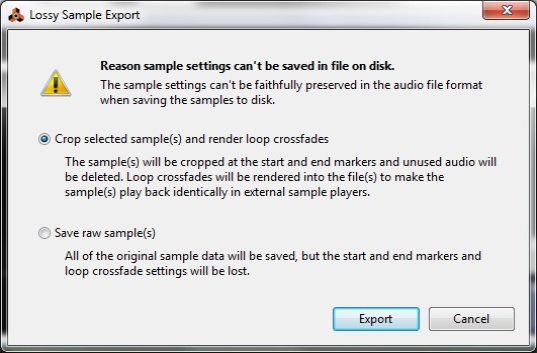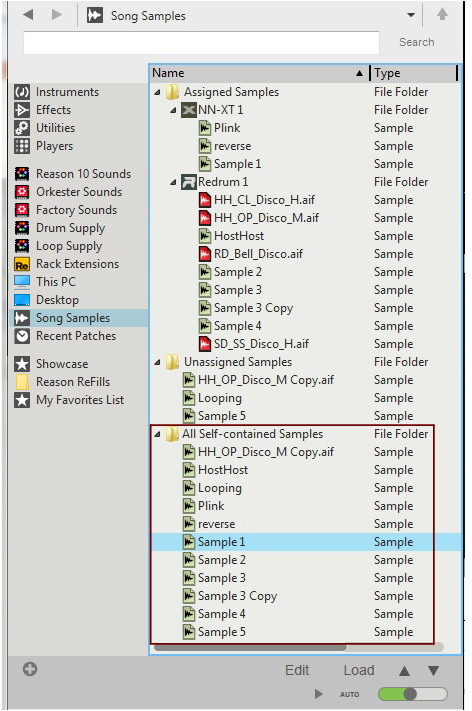Unassigned samples can be assigned to any sampler device by simply loading them into a sampler device - see “Loading samples into a device”.
|
•
|
Self-contained samples can also be loaded into any sampler device from the Browser. See “Loading samples into a device” for more details.
There might be situations where you want to “un-self-contain” your own samples, i.e. export the samples to disk as separate files and at the same time remove them from the song document. This can be done by selecting “Song Self-Contain Settings...” from the File menu - see “About Self-Contained Songs” for more details.
